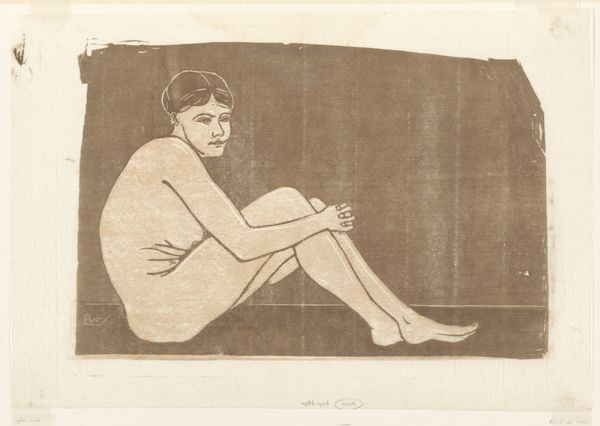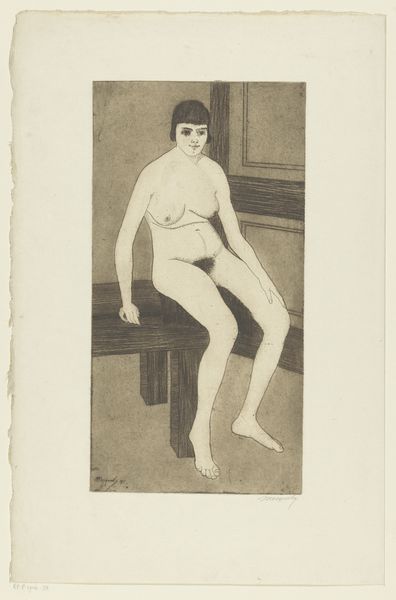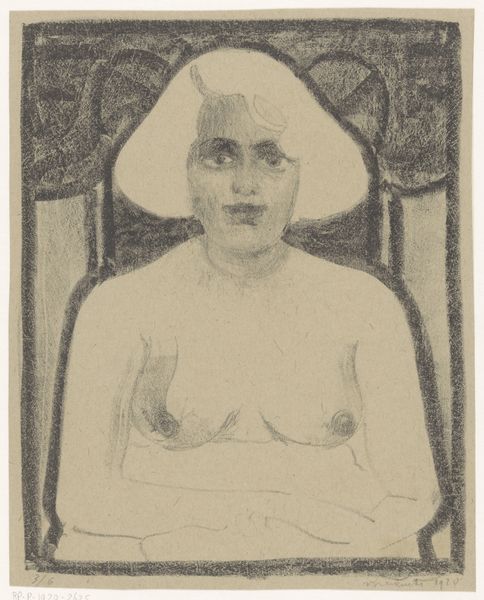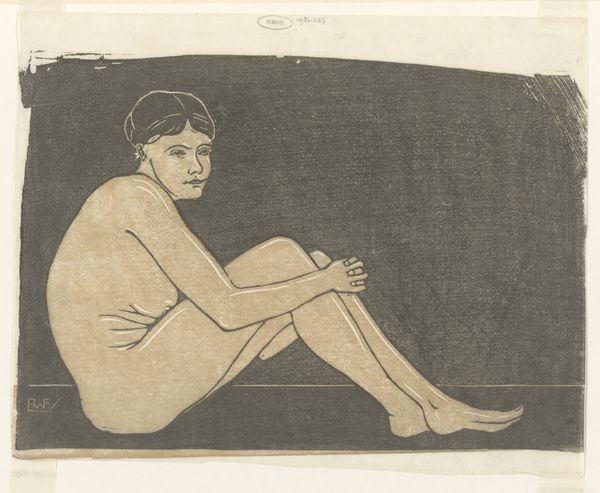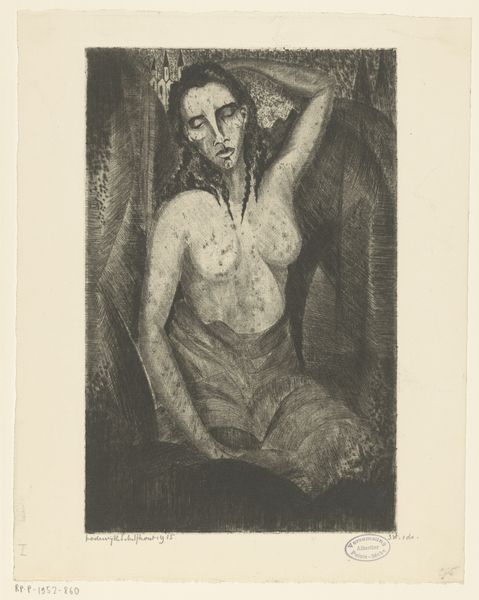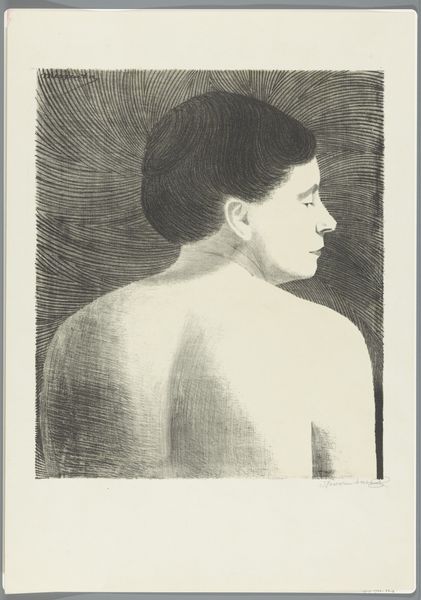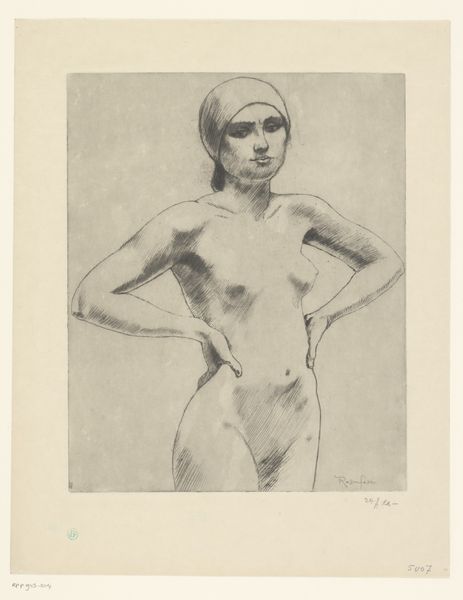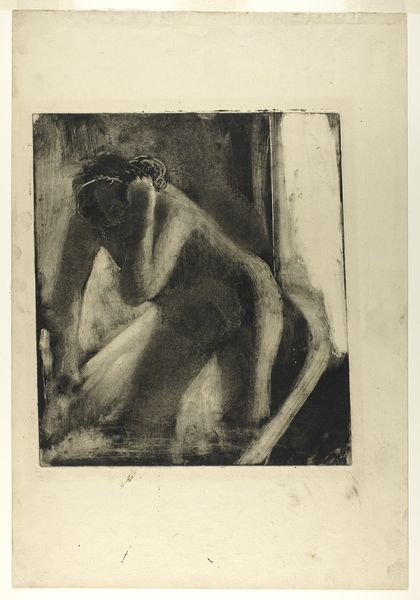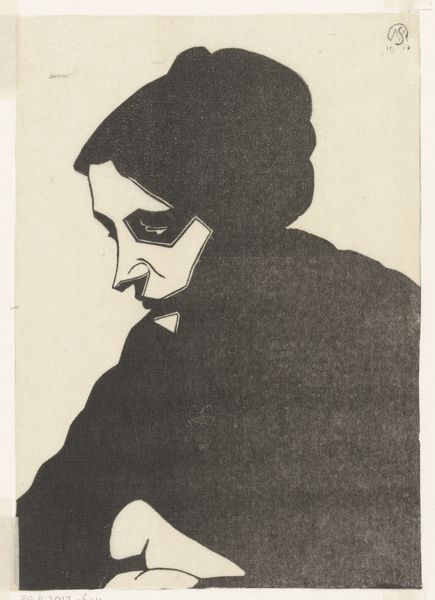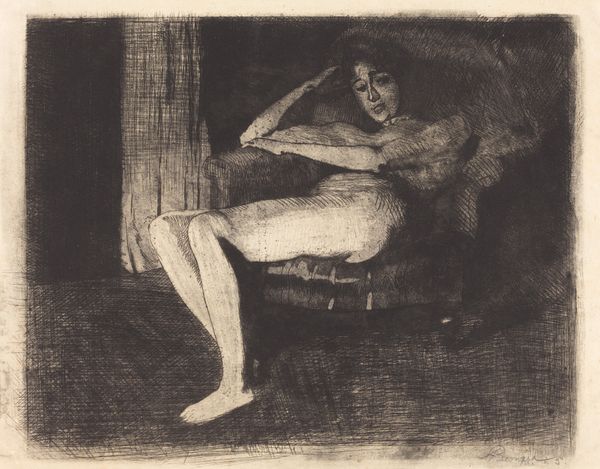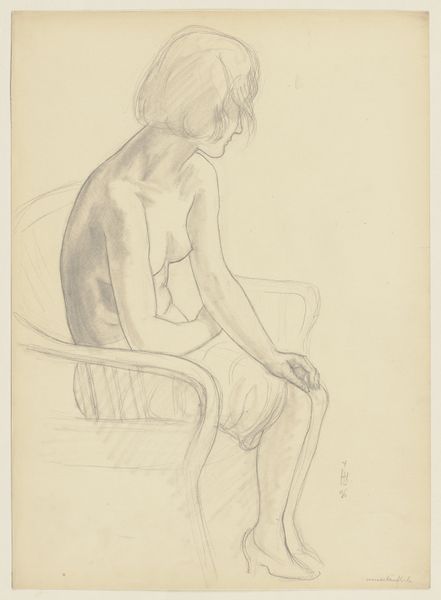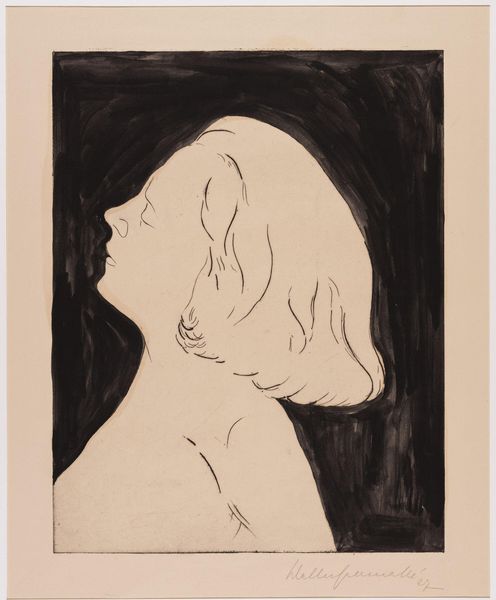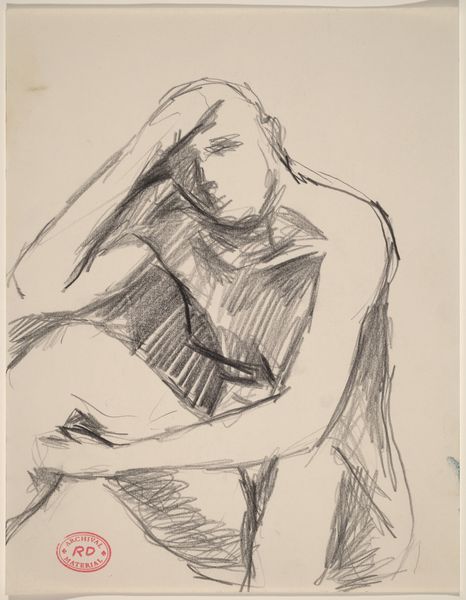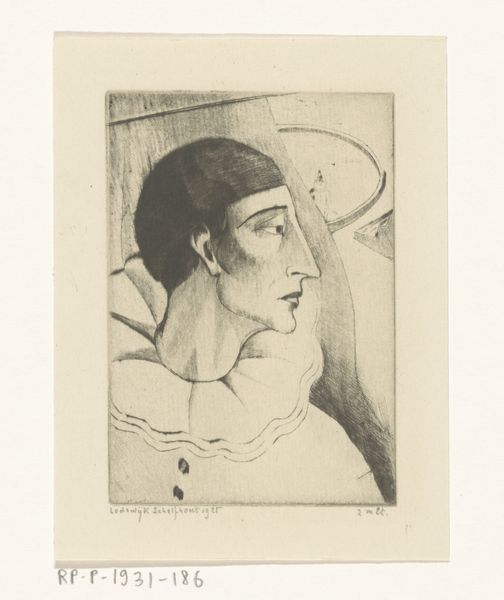
Vrouwelijk naakt, gezeten op een bank, de hand tegen het hoofd 1920
0:00
0:00
drawing, pencil, graphite
#
portrait
#
pencil drawn
#
drawing
#
pencil sketch
#
pencil drawing
#
pencil
#
graphite
#
nude
Dimensions: height 195 mm, width 250 mm
Copyright: Rijks Museum: Open Domain
Editor: We're looking at "Vrouwelijk naakt, gezeten op een bank, de hand tegen het hoofd," a pencil and graphite drawing from 1920 by Samuel Jessurun de Mesquita. It's a seated nude, fairly simple in its composition, and has an almost melancholy feel. What catches your eye when you look at it? Curator: What interests me is the labor, and the physical process that went into making this. Think about the artist’s hand, moving repeatedly across the paper to build up the tone and texture with graphite. It's almost industrial, wouldn’t you say? Editor: Industrial? In a nude drawing? I wouldn't immediately think of that connection. Curator: Well, consider the materiality. Graphite is mined, processed, manufactured into pencils – instruments for both artistic expression and, importantly, industrial drafting. It’s this very blurring of art and craft that I find fascinating here. Does the act of sketching this nude figure become another form of labor, linked to the broader material culture of the time? Editor: So you're saying the *making* of the image is as important as the image itself? I hadn't considered the pencil as almost a little machine! Curator: Exactly! The 'high art' subject matter, the nude, is brought down to earth, interrogated through the lens of its own production. What does it tell us about consumption, too, I wonder? Was this meant for display, or as study? Editor: That’s given me a whole new perspective. I usually just think about the final image, not everything that went into creating it. It changes how you understand the artwork completely. Curator: Indeed. By thinking about production, labor, and materials, we can unearth new meanings in even the most traditional of subjects.
Comments
No comments
Be the first to comment and join the conversation on the ultimate creative platform.
